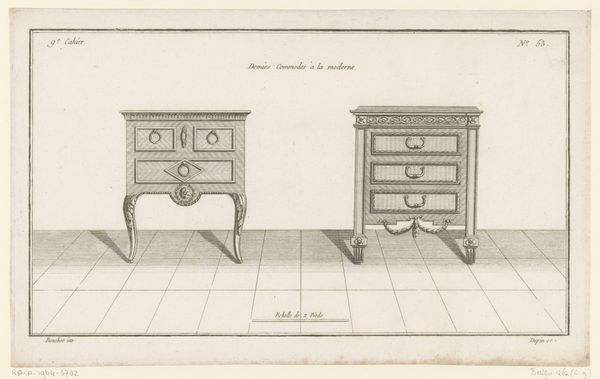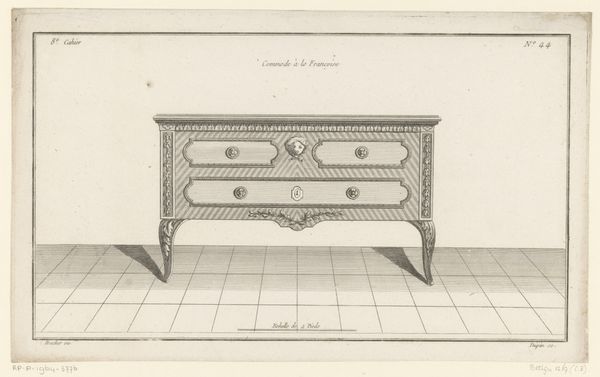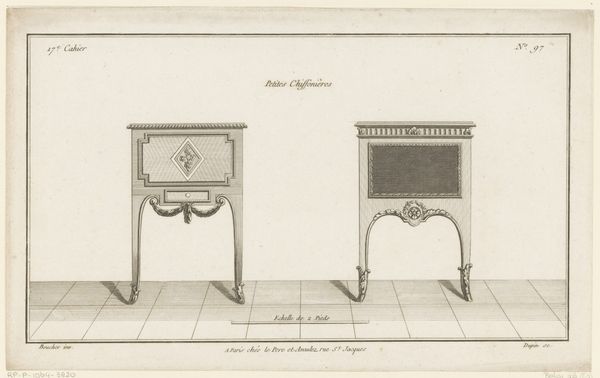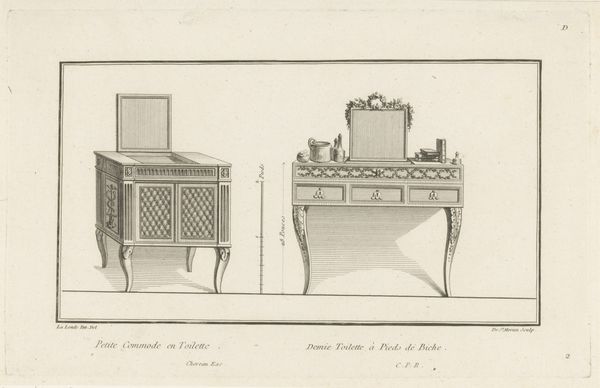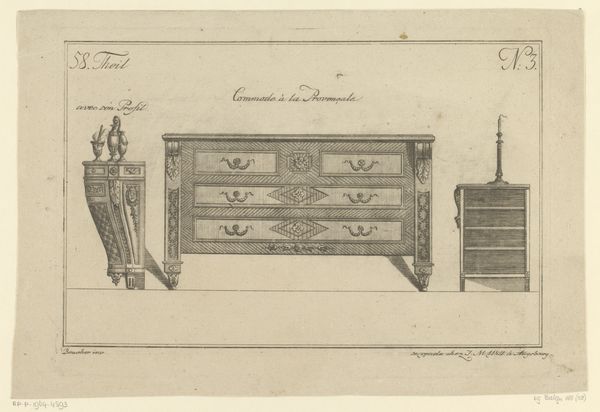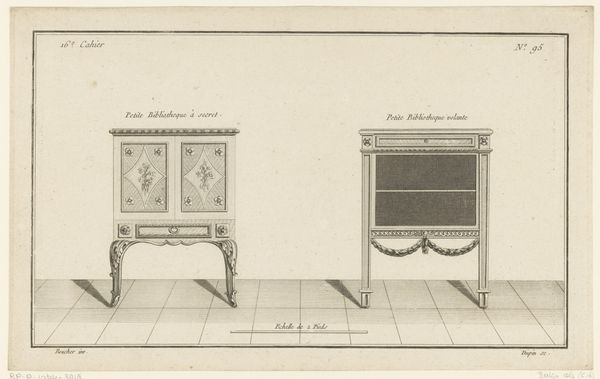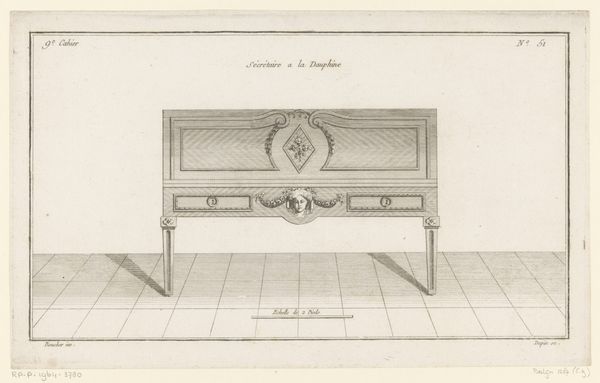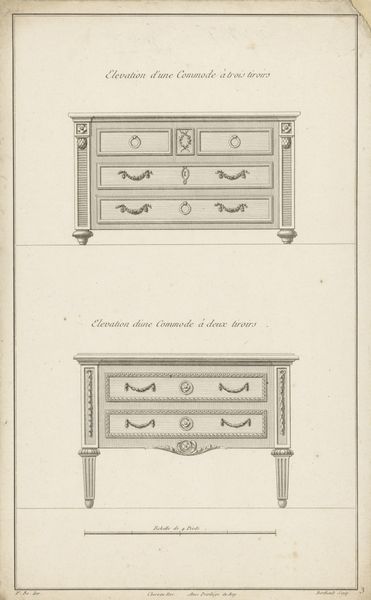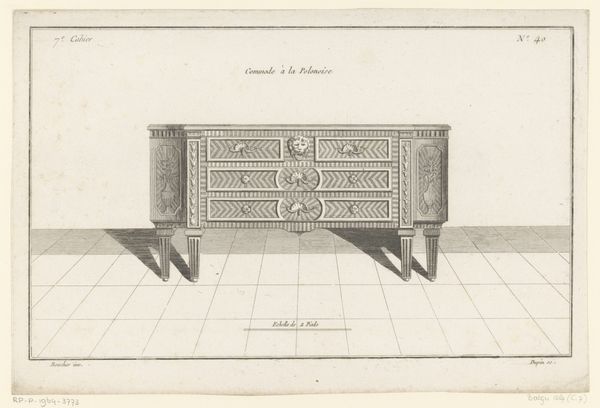
drawing, print, paper, pen, engraving
#
drawing
#
neoclacissism
# print
#
paper
#
form
#
line
#
pen
#
decorative-art
#
engraving
Dimensions: height 197 mm, width 320 mm
Copyright: Rijks Museum: Open Domain
Curator: At the Rijksmuseum, we have a delicate engraving, "Twee Commodes," dating from 1772 to 1779, crafted by Nicolas Dupin. Editor: It's so spare, almost like an architect's blueprint for furniture. The symmetry is… intense. But also, strangely peaceful. Curator: Precisely. Dupin was working within the Neoclassical movement, emphasizing order and restraint. He even names them “Latest Chests of Drawers for England”, but only depicts them, not produces them. Editor: The commodes stand side by side, yet each one is strikingly different, the drawing really highlights their forms. It feels like he’s asking us to choose which one is more “correct,” in some way. It also strikes me as quite odd: functional objects framed as works of art. Is this just fetishism? Curator: I see them more as embodiments of their era's aspirations, a dance between pure form and functional beauty. These pieces whisper of a world enamored with the classical ideals, repurposed through the stylish decorative arts and line engravings of the late 18th century. Think about the visual impact! Editor: There’s definitely a visual game being played here. Those ring pulls look like eyes, almost comically watching the world. Each of the chests appear to have been provided with their own little patch of marble floor! How wonderfully peculiar. Curator: It's a study of shape and expectation, as it explores how classical motifs have seeped into everyday life, turning a simple commode into something approaching sculpture. Editor: I am amused at how these items of storage have had such deep symbolism attributed to them through an analysis of style and placement, considering that most items of furniture now are… rather plain! Curator: The symbols might shift over time, but the dialogue endures. We project and imbue these objects with meanings that reflect back upon ourselves, mirroring our hopes and desires, don't you agree? Editor: Beautifully said! So here's to finding reflections, and maybe a little unexpected poetry, in the things we surround ourselves with. Curator: And long may that discovery continue, indeed.
Comments
No comments
Be the first to comment and join the conversation on the ultimate creative platform.
